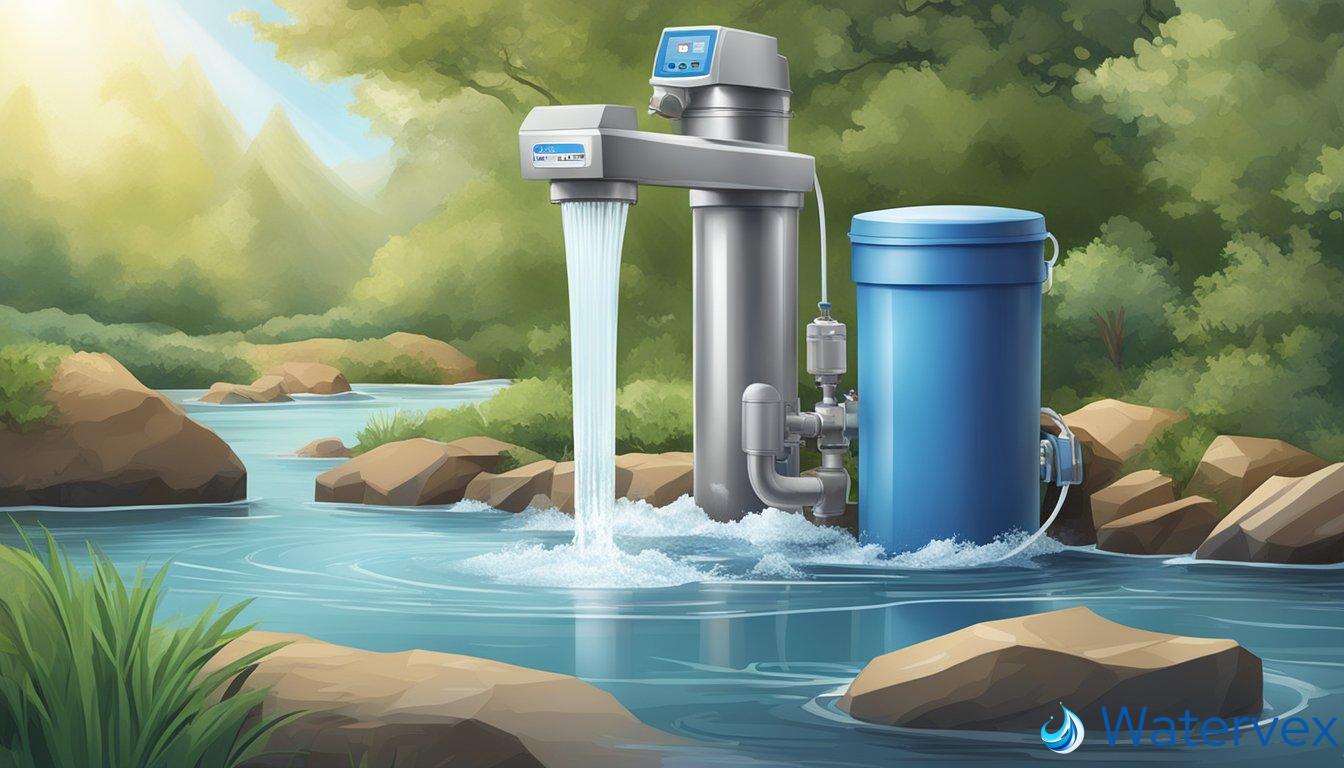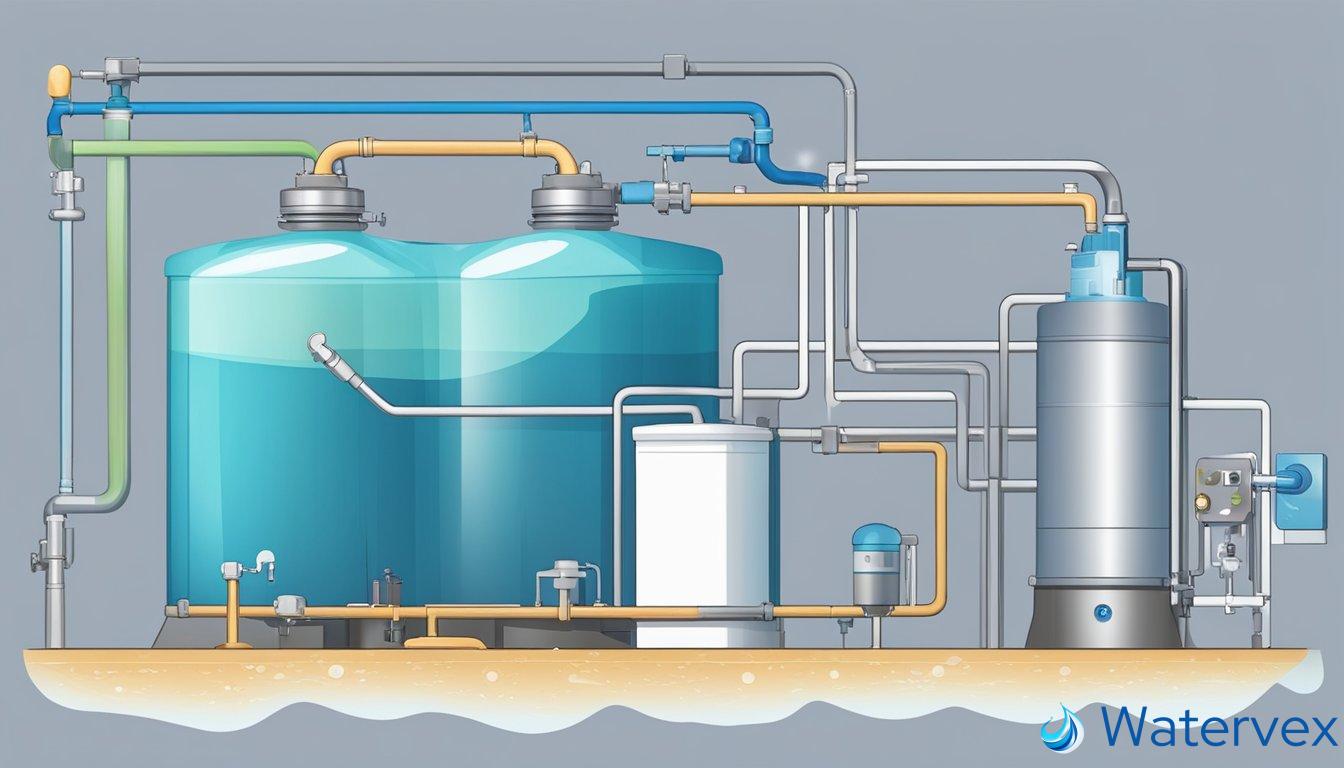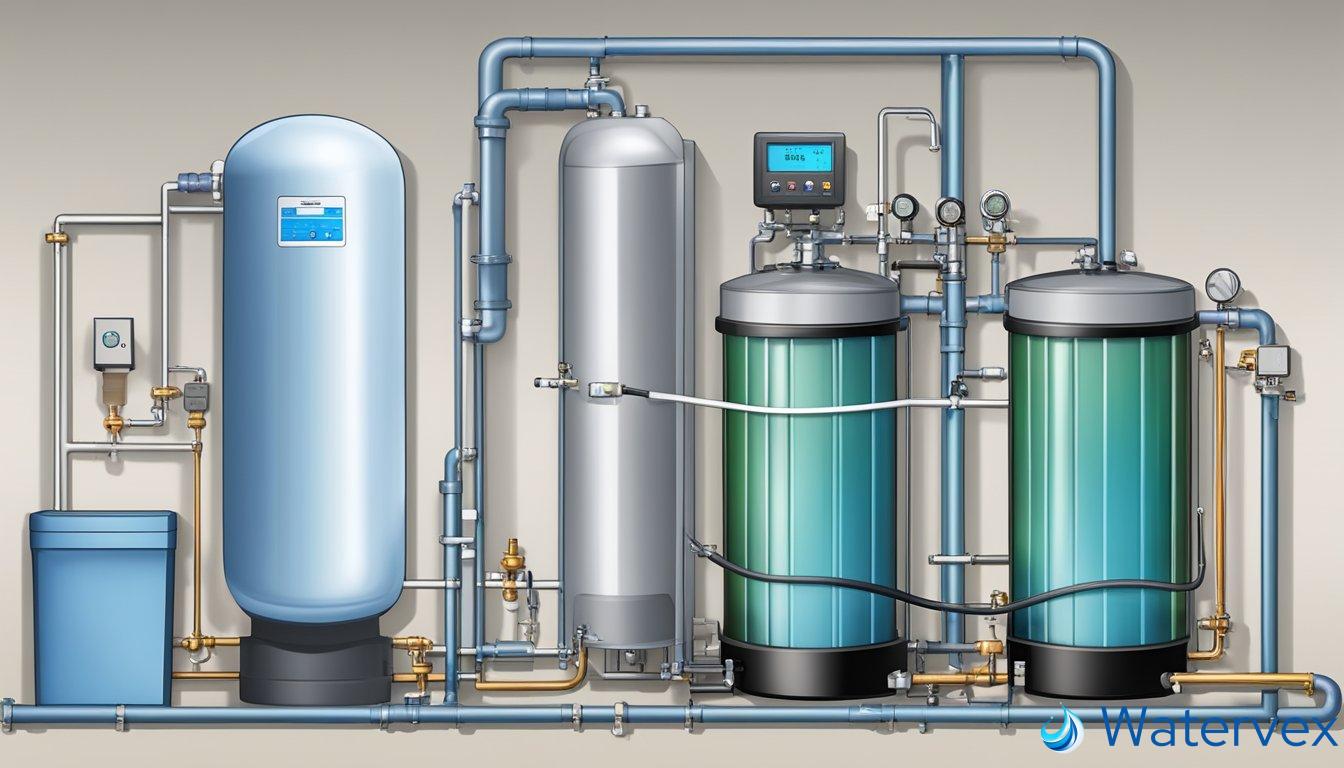When exploring the efficiency of a water treatment system like a water softener, it’s important to understand its role and limitations in making your drinking water safe. A common misconception is that softening water also purifies it, which is not exactly the case. The primary function of a water softener is to remove minerals such as calcium and magnesium that cause water hardness, not to disinfect or remove microbiological contaminants.

Despite the advantages of water softeners in preventing scale buildup and extending the lifespan of your appliances, they are not designed to tackle bacteria or other pathogens that may be present in your water supply. If your concern is bacterial contamination, additional water treatment measures like filtration or disinfection are needed to specifically address these concerns. For homes supplied by city water, the treatment facility typically ensures water safety, but for well water users or in the occurrence of a contamination breach, having a multi-barrier approach to water purification is essential for health protection.
Key Takeaways
- A water softener’s purpose is to remove hardness-causing minerals from water, not to purify it.
- Bacteria and pathogens are not addressed by water softening and require specific treatment methods.
- Homeowners using well water or concerned with bacterial contamination should consider a comprehensive water treatment system.
How Water Softeners Work
Water softeners are systems designed to remove unwanted minerals from your water. Through a process called “ion exchange,” these devices primarily target calcium and magnesium, which are responsible for water hardness.
Understanding the Science Behind Water Softening
Imagine every time you turn on the tap, a troop of minerals like calcium, magnesium, and iron march out. These hard minerals can cause a lot of hassles, from scaling on appliances to making your soaps less effective. A water softener is kind of like a bouncer, selectively swapping those hard mineral ions with something a bit less troublesome – typically sodium or potassium ions.
Here’s a step-by-step of what happens inside a typical water softener:
- Hard Water Entry: Hard water enters the water softener system.
- Resin Bed Encounter: The water passes through a resin bed in the mineral tank.
- Ion Exchange Process: As hard water contacts the resin beads, the hard mineral ions are replaced with sodium or potassium ions.
- Water Flow Continuation: The now “soft” water flows out of the water softener and through your pipes.
During this process, the hard minerals attach to the resin and the swapped sodium or potassium ions are released into the water. The resin bed effectively removes water hardness, and what you get is softer water that’s kinder to your skin, clothes, and fixtures.
To make sure these resin beds keep performing, they need to regenerate periodically. The regeneration cycle flushes the gathered hard minerals from the resin using a strong brine solution and prepares the unit to soften water again. This way, those hard-working beads are ready for the next batch of water flowing through.
By taking a deep dive into just one aspect of water softening, you gain a clearer picture of how these systems work. You now have a basic understanding that water softeners primarily tackle water hardness and not bacteria, ensuring your home water is gentler on everything it touches.
Health and Water Quality

Good water quality is critical to maintaining health, and water softeners play a role in altering the mineral content of your water. Let’s explore how this can affect both your personal health and the water you use daily.
Impact of Softened Water on Skin and Hair
Soft water, characterized by its low concentration of calcium and magnesium, may feel more slippery on your skin and could be beneficial if hard water has been drying out your skin or dulling your hair. Some people report that bathing in soft water requires less soap and leaves skin feeling smoother and hair more manageable. However, if you find your skin becoming overly dry, it might be due to the sodium intake from softened water, though generally the levels are too low to cause an issue.
Water Softening and Your Health
It’s important to note that water softeners are designed to substitute calcium and magnesium in hard water with sodium or potassium, but they are not purifiers and do not kill microorganisms such as bacteria. If you’re concerned about microorganisms in your water, additional water filtration systems designed to target these specific contaminants might be needed. The presence of soft water in your home does not lower your risk of these organisms; only a proper disinfection process will ensure that your water is free from harmful bacteria.
Combating Bacteria and Pathogens

When it comes to protecting your family from pathogens, understanding the capabilities of your water conditioning system is key. It’s crucial to distinguish between water softening and thorough disinfection methods that target harmful microorganisms in your water supply.
Water Softening vs. Disinfection
Water softeners are designed to tackle the hard water dilemma by removing minerals like calcium and magnesium. However, when it comes to bacteria and viruses, softeners are not a disinfection method. They are not effective against pathogenic organisms that can cause illness.
Iron bacteria, which are known to thrive in moist, iron-rich environments, may give a false notion that softeners can control bacterial growth. Nonetheless, while they can combat the iron that bacteria feed on, they do not disinfect your water. It’s imperative to use a disinfection method like chlorination or ultraviolet (UV) light systems, which are specifically designed to kill bacteria and viruses.
Chlorine is widely used to disinfect water and can eliminate a wide range of pathogenic bacteria, such as Legionella and coliform bacteria. Its effectiveness, however, depends on the concentration and contact time with the water. Too low a concentration may not sufficiently disinfect the water, while too high can be harmful and affect the taste and smell.
Ultraviolet (UV) light is another powerful disinfection method, offering the advantage of being chemical-free. UV systems expose water to UV light at a wavelength that’s proven to be effective in disrupting the DNA of pathogenic organisms, making them unable to reproduce and cause illness.
Regular water testing is recommended to detect the presence of both non-pathogenic and pathogenic bacteria in your water. It’s one of the most proactive steps you can take to ensure your water is safe. If contaminated water is suspected, it’s important to choose a reliable disinfection method according to the specific contaminants identified.
It’s always better to consult with water treatment experts who can provide tailored advice to ensure that your water supply is not just softened but also free of harmful microorganisms. Protecting your family’s health starts with being informed about the water they use every day.
Optimizing Home Water Systems

To maintain the efficacy and longevity of your home water system, it’s crucial to adhere to best practices and regular maintenance.
Maintenance and Best Practices
Routine Inspection: Ensure your water softener and related plumbing systems are checked periodically. For homeowners, this could mean visually inspecting appliances, such as your water heater, for signs of scale build-up. Flushing your water heater at least once a year can prevent sediment accumulation, which can harbor bacteria.
Cleaning Fixtures: Regularly clean faucets and showerheads to prevent mineral deposits. Hard water can leave behind calcium and magnesium, which not only cause unsightly soap scum but could potentially encase bacteria, making these spots harder to disinfect.
Piping Care: Plumbing pipes also need attention; over time, they can accumulate scale, affecting water flow and quality. If you’re noticing reduced water pressure, it might be time to consider descaling pipes or replacing sections where scale build-up is significant.
Soap Efficiency: Hard water interferes with soap’s ability to lather, resulting in increased usage and the potential for more soap scum. By using a water softener, you’ll need less soap, and it will be more effective, leaving less residue behind.
Appliance Upkeep: Appliances that use water, like dishwashers and washing machines, last longer and work more efficiently when scale is not a factor. Softened water prevents the damaging effects of hard water minerals that wear on the internal components.
Barrier to Bacteria: Although a water softener is not designed to kill bacteria, maintaining your system can aid in preventing bacterial growth. Devices such as whole-house water filters or reverse osmosis systems might be necessary to address bacteria, but a well-maintained water softener can contribute to an overall cleaner water supply.
Remember, keeping every part of your water system in good shape not only provides a better quality of water but can also prevent unnecessary expenses in the future. Adhering to these maintenance practices will help you achieve a balance between clean, soft water and the longevity of your water-using appliances and plumbing.

